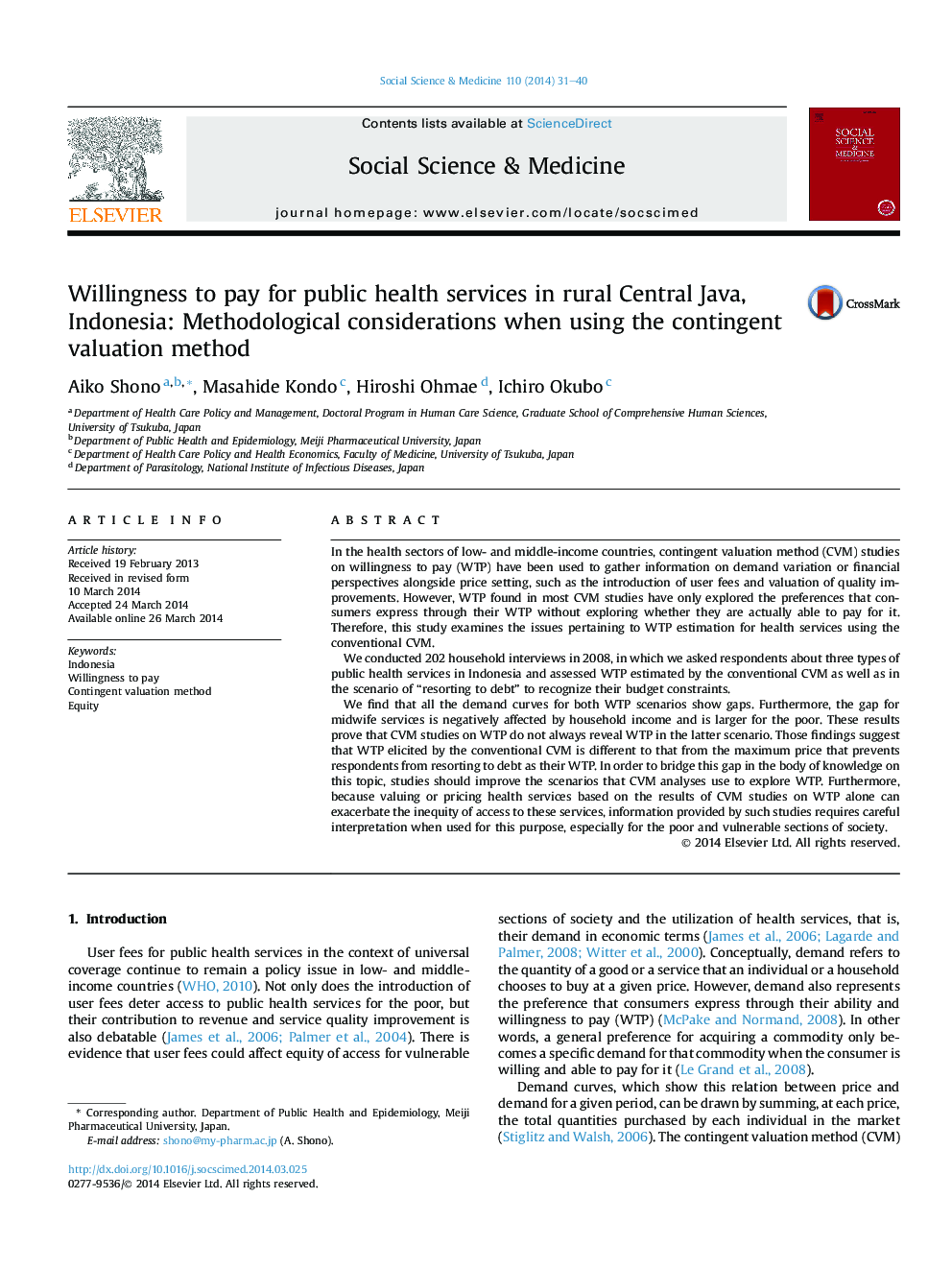| Article ID | Journal | Published Year | Pages | File Type |
|---|---|---|---|---|
| 7335066 | Social Science & Medicine | 2014 | 10 Pages |
Abstract
We find that all the demand curves for both WTP scenarios show gaps. Furthermore, the gap for midwife services is negatively affected by household income and is larger for the poor. These results prove that CVM studies on WTP do not always reveal WTP in the latter scenario. Those findings suggest that WTP elicited by the conventional CVM is different to that from the maximum price that prevents respondents from resorting to debt as their WTP. In order to bridge this gap in the body of knowledge on this topic, studies should improve the scenarios that CVM analyses use to explore WTP. Furthermore, because valuing or pricing health services based on the results of CVM studies on WTP alone can exacerbate the inequity of access to these services, information provided by such studies requires careful interpretation when used for this purpose, especially for the poor and vulnerable sections of society.
Related Topics
Health Sciences
Medicine and Dentistry
Public Health and Health Policy
Authors
Aiko Shono, Masahide Kondo, Hiroshi Ohmae, Ichiro Okubo,
